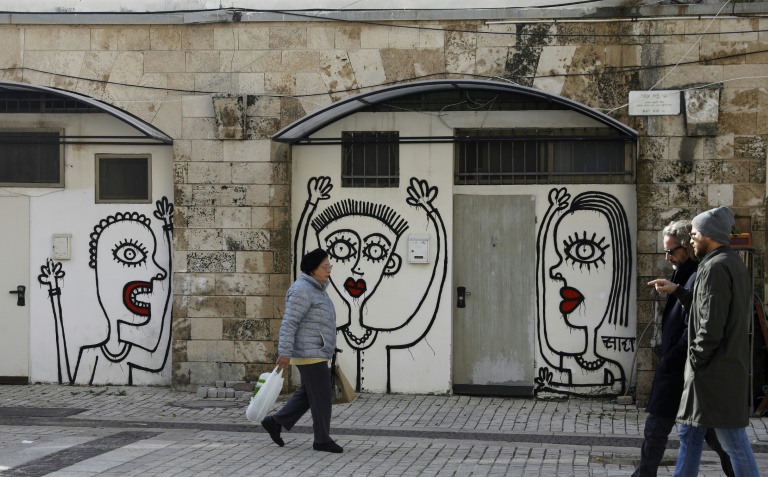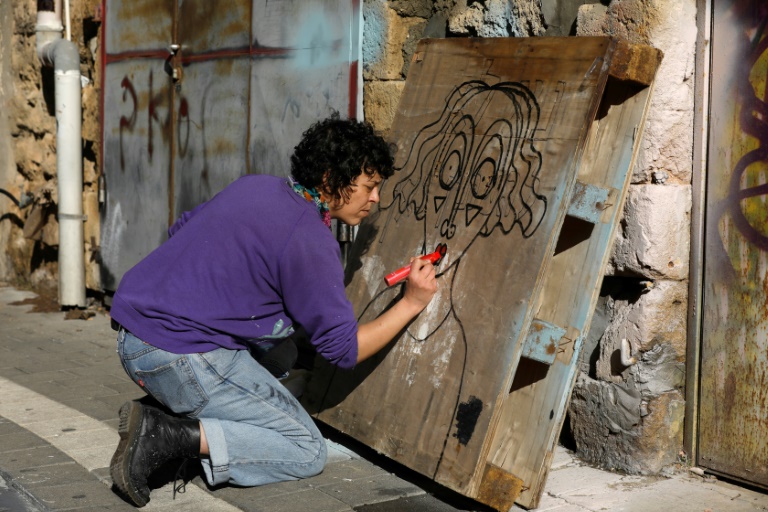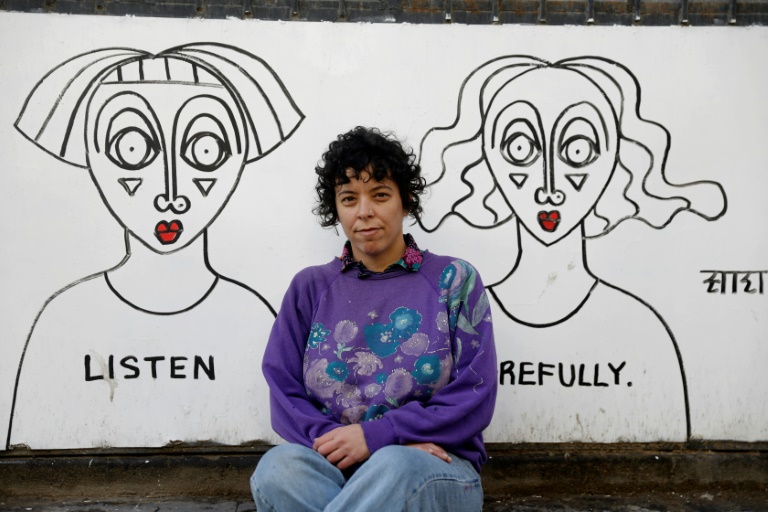SANBS calls for urgent blood donations as stocks decline – Here’s what you need to know
New York-based Erenthal, who left religious life behind, is attracting growing attention for her unusual murals and art that give a second life to abandoned objects she finds.
Artnet website in December listed her among 10 street artists to watch who are “taking the art form beyond Banksy”, the famed British activist.
The 36-year-old’s work has flourished in the streets of Brooklyn and at the New York borough’s FiveMyles exhibition and performance space.
It has been an unlikely rise for someone from the closed world of the ultra-Orthodox, who follow a strict interpretation of Jewish law.
“I didn’t have a happy childhood,” Erenthal told AFP during a recent return to Israel for the first time in her professional life.
“I stopped believing in God when I was very young, but I never said it. There were also arguments with my family.”
While back in Israel for several weeks, Erenthal worked in a studio and on the streets of Jerusalem and Tel Aviv.
– ‘Subconscious self-portrait –
Some of her work was exhibited at the Bait Haadom (Red House) gallery in the hip Shapira neighbourhood of southern Tel Aviv.
She painted her emblematic woman’s face, with stylised black curves and red lips, on the Jerusalem streets of the ultra-Orthodox district of Geula near Mea Shearim, the strictly religious area where she was born.
That face and its different guises, almost expressionist in nature, has become her signature.

Thirty-six-year-old Erenthal’s unusual murals have flourished in the streets of Brooklyn
“It is a self-portrait. It represents me in all my variations and also all women and people,” she said.
“It is a subconscious self-portrait.”
The image at times takes the form of a young girl with braids, how she herself was as a girl.
– ‘Time to leave’ –
Erenthal comes from a family that belonged to the Neturei Karta branch of ultra-Orthodox Judaism, known for its especially strict religious lifestyle and its opposition to Zionism.
For Neturei Karta members, the establishment of a Jewish state is prohibited before the coming of the Messiah, so they avoid dealings with the Israeli state.
When she was only a few years old, her parents left Jerusalem and moved to an ultra-Orthodox neighbourhood of Brooklyn, where she spent most of her childhood.

Erenthal often draws her murals on abandoned objects such as scrap wood or televisions to give them a second life
“When I was 17 and a half, we moved back to Israel,” Erenthal said.
“A few months later, my parents told me they had found someone for me (to marry) without really giving me a choice. I had a gut feeling that that was the time, that if I didn’t leave right away I would never leave.”
– ‘A subtle message’ –
She ran away from her family and went to the army’s recruitment office to carry out her military service, mandatory in Israel, though young ultra-Orthodox are often exempt.
She spent time in a kibbutz — the collective communities in Israel — and learned Hebrew there after having previously spoken Yiddish, the ancient language that some ultra-Orthodox in Israel still use.
Erenthal did nearly two years of military service, working in the administration of an infantry unit.
“My military service was my introduction to the secular world,” she said.
She later returned to New York, surviving with the help of odd jobs and enduring a “feeling of emptiness”.
Seeking to address that void, she spent nearly a year in India. Then in her 30s, she began to draw while there.
“In India, I started to develop as an artist. Until then, I never thought I could be an artist,” she said.
“In my family, I was not exposed to contemporary art and to culture in general. We would never go to the museum.”

Erenthal, who hails from a family that belonged to the Neturei Karta branch of ultra-Orthodox Judaism, often includes messages in her work. Her signature style is a woman’s face featuring stylised black curves and red lips, which she said is a “subconscious self-portrait”
Back in New York, she took her first steps in the art world, beginning by working in a studio. She quickly turned toward street art, using found objects such as mattresses, televisions and scrap wood in her work, then trying her hand at murals.
She gradually began to include messages in her paintings.
Many are spontaneous, inspired by her feelings in the moment or by the objects themselves. Some are more militant, although she says she is not trying to provoke.
While in Jerusalem, her graffiti on an abandoned window included the words “Open Your Eyes”.
“These words are an invitation to stop for a moment and think,” she said.
“It is a subtle message in case someone would need it. I am not trying to tell ultra-Orthodox Jews how they should live their lives. I am not trying to convince anyone.
“If someone should see this message, he will.”
Download our app